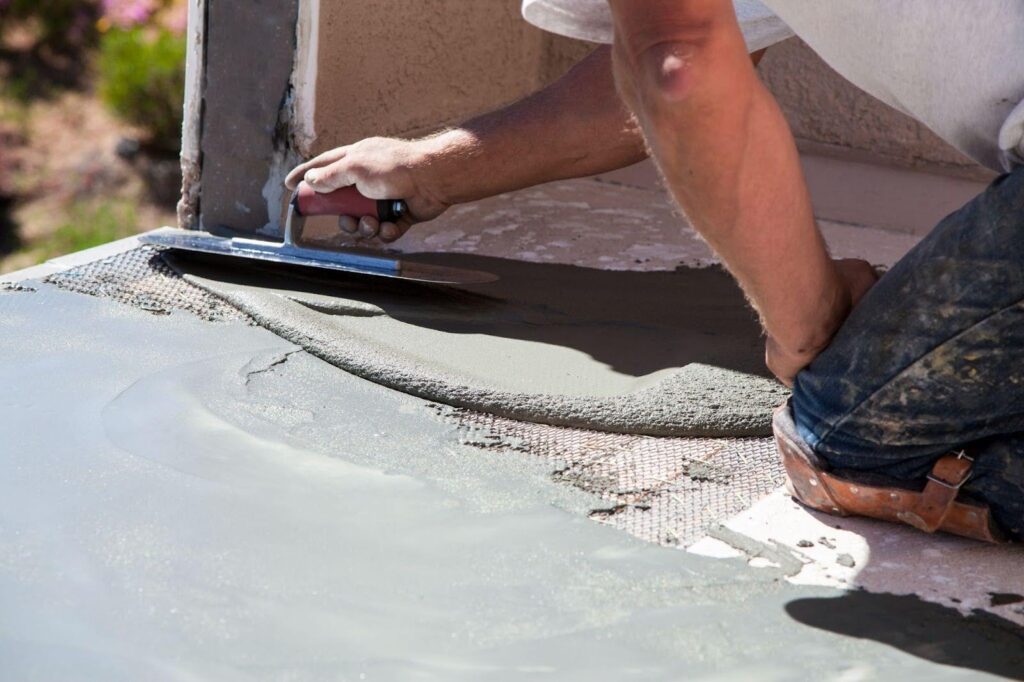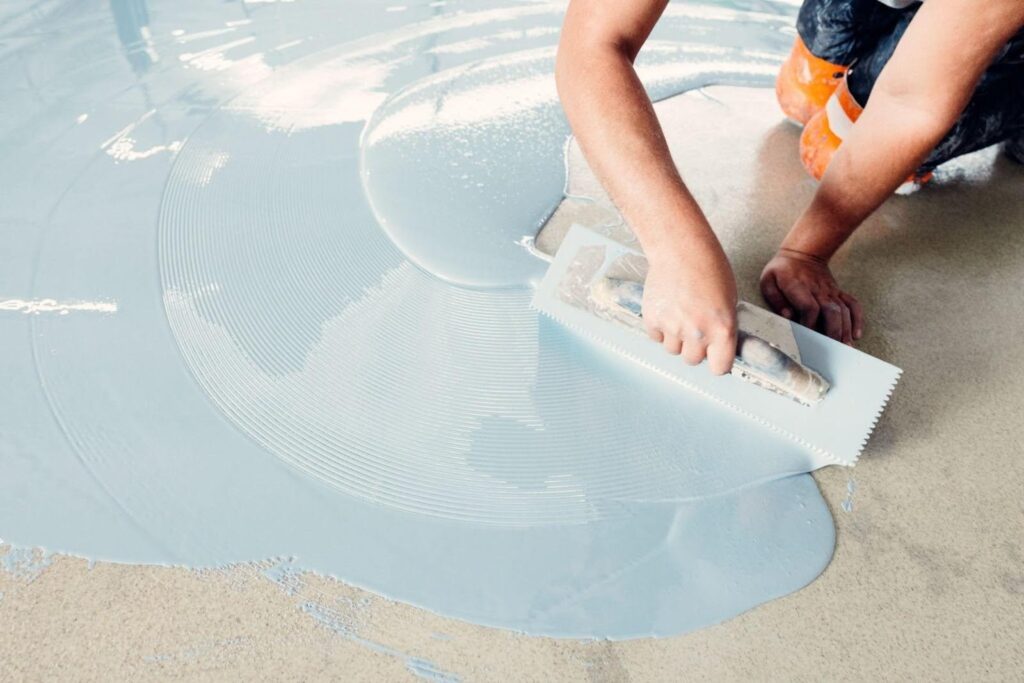Transforming your garage floor doesn’t have to be expensive. Budget-friendly options like epoxy coatings, painted concrete, rubber mats, and interlocking tiles offer durability and style without breaking the bank. Epoxy flooring is a standout choice due to its sleek finish and resistance to stains and wear. Other solutions, such as rubber mats or concrete stains, provide practicality and ease of installation. With proper planning, you can achieve a functional and attractive garage floor that suits your needs and budget.
Table of Contents
- Why Garage Flooring Matters for Your Space
- Top Budget-Friendly Garage Flooring Options to Explore
- Pros and Cons of Each Flooring Type
- When to Choose Professional Installation Over DIY
- Final Tips for Maintaining Your Garage Floor Long-Term
Your garage is more than just a place to park your car – it’s a multifunctional space that deserves attention. Whether you use it for storage, DIY projects, or as a home gym, having a durable and attractive floor is essential. A well-chosen garage floor can withstand heavy use, resist stains, and enhance the overall look of the space.
Fortunately, upgrading your garage floor doesn’t have to be expensive. There are plenty of budget-friendly options available that combine functionality with style. For instance, garage floor epoxy in Calgary has become a popular choice for homeowners seeking a sleek, long-lasting finish.
Other affordable solutions like painted concrete, rubber mats, and interlocking tiles also offer practical benefits. By exploring these options, you can transform your garage into a space that’s both functional and visually appealing without overspending.
Why Garage Flooring Matters for Your Space
Your garage floor is the foundation of one of the most versatile areas in your home. It endures heavy foot traffic, exposure to chemicals, and fluctuating temperatures, making it essential to choose a surface that can withstand these challenges. A well-designed garage floor not only enhances the space’s functionality but also improves its appearance and durability.
Key Reasons to Invest in Garage Flooring
Here’s why giving attention to your garage floor is worth the effort:
- Durability: A strong, resilient floor resists cracks, stains, and wear from daily use.
- Safety: Non-slip surfaces prevent accidents, especially in garages used as workspaces or gyms.
- Aesthetics: Upgrading your floor can transform a dull, utilitarian space into an attractive area that complements your home.
- Property Value: A well-maintained garage adds to your home’s overall appeal, which can be beneficial if you plan to sell.
The Impact of Neglecting Your Garage Floor
Ignoring your garage floor can lead to problems like moisture damage, mold growth, or unsightly stains. Over time, these issues can compromise the structural integrity of the space and require costly repairs. Investing in proper flooring now helps avoid these headaches down the road.
By understanding the importance of garage flooring, you can make informed decisions that align with your needs and budget.
Top Budget-Friendly Garage Flooring Options to Explore
When it comes to upgrading your garage floor, there’s no shortage of affordable options that balance cost, durability, and style. Below are some of the most popular and budget-friendly choices to consider for your space:
1. Epoxy Coatings
Epoxy flooring is a standout option for homeowners seeking a sleek, durable finish. It’s resistant to stains, chemicals, and heavy wear, making it ideal for garages used for parking or workshops. Available in a variety of colors and finishes, epoxy coatings can be customized to match your style.
2. Painted Concrete
For a simple and cost-effective solution, painted concrete is a great choice. Specialized garage floor paints are designed to withstand heavy use and provide a clean, polished look. While not as durable as epoxy, it’s an excellent option for those on a tight budget.
3. Rubber Mats
Rubber mats are perfect for comfort and safety, especially in garages used as home gyms or play areas. They’re slip-resistant, easy to install, and provide cushioning underfoot. Plus, they’re portable and can be replaced as needed.
4. Interlocking Tiles
Interlocking tiles offer versatility and ease of installation. Made from materials like PVC or polypropylene, these tiles snap together without the need for adhesives. They come in various colors and patterns, allowing you to create a custom look while protecting your concrete floor.
5. Concrete Stains
Concrete stains enhance the natural texture of your existing floor while adding color and protection. This option is low-maintenance and cost-effective, though it may require periodic reapplication to maintain its appearance.
Each of these options has unique benefits, making it easier to find a solution that fits your budget and lifestyle.
Pros and Cons of Each Flooring Type
Choosing the right garage flooring involves weighing the advantages and disadvantages of each option. To make this easier, we’ve compiled a comparison table that outlines the key features of popular budget-friendly flooring solutions.
|
Flooring Type |
Pros |
Cons |
|
Epoxy Coatings |
– Durable and long-lasting; – Resists stains, chemicals, and wear; – Customizable colors and finishes. |
– Requires professional installation for best results; – Surface prep can be time-consuming. |
|
Painted Concrete |
– Affordable and easy to apply; – Provides a clean, polished look. |
– Less durable than epoxy; – May chip or peel over time. |
|
Rubber Mats |
– Comfortable and slip-resistant; – Easy to install and replace. |
– Limited design options; – Can trap dirt if not cleaned regularly. |
|
Interlocking Tiles |
– DIY-friendly installation; – Available in various colors and patterns. |
– Gaps between tiles may collect dirt; – Not as durable as epoxy. |
|
Concrete Stains |
– Enhances natural concrete texture; – Low-maintenance and cost-effective. |
– Requires reapplication over time; – Limited resistance to heavy wear. |
Understanding the pros and cons of each option helps you make an informed decision based on your priorities-whether it’s durability, cost, or ease of installation. For example, while epoxy coatings offer unmatched longevity, painted concrete might be more suitable for those seeking a quick, budget-friendly fix. By evaluating these factors, you can choose a flooring solution that aligns with your needs and secures long-term satisfaction.
When to Choose Professional Installation Over DIY

While some garage flooring options, like rubber mats or interlocking tiles, are ideal for DIY projects, others may require professional expertise. Epoxy coatings, for instance, involve meticulous surface preparation and precise application techniques that can be challenging for inexperienced homeowners.
- If you’re short on time or lack the tools and skills for proper installation.
- When seeking a flawless, long-lasting finish that adds value to your home.
- For complex projects involving extensive floor repairs or customization.
Professionals bring experience and specialized equipment, securing a durable and visually appealing result.
Final Tips for Maintaining Your Garage Floor Long-Term
Choosing the right garage flooring is only half the battle – proper maintenance ensures it stays in top condition for years to come. Start by regularly sweeping or vacuuming to remove dirt and debris that can cause scratches or wear. For epoxy coatings or painted floors, use a mild detergent and water to clean spills promptly and avoid harsh chemicals that may damage the surface.
Applying a fresh coat of sealant every few years can extend the life of stained concrete or painted floors, while rubber mats and interlocking tiles benefit from occasional deep cleaning to prevent dirt buildup. With consistent care, your garage floor will remain functional, stylish, and durable.
By exploring budget-friendly options and committing to proper upkeep, you can create a garage space that meets your needs without overspending. Whether you opt for professional installation or a DIY approach, investing in your garage floor pays off in both functionality and aesthetics.

